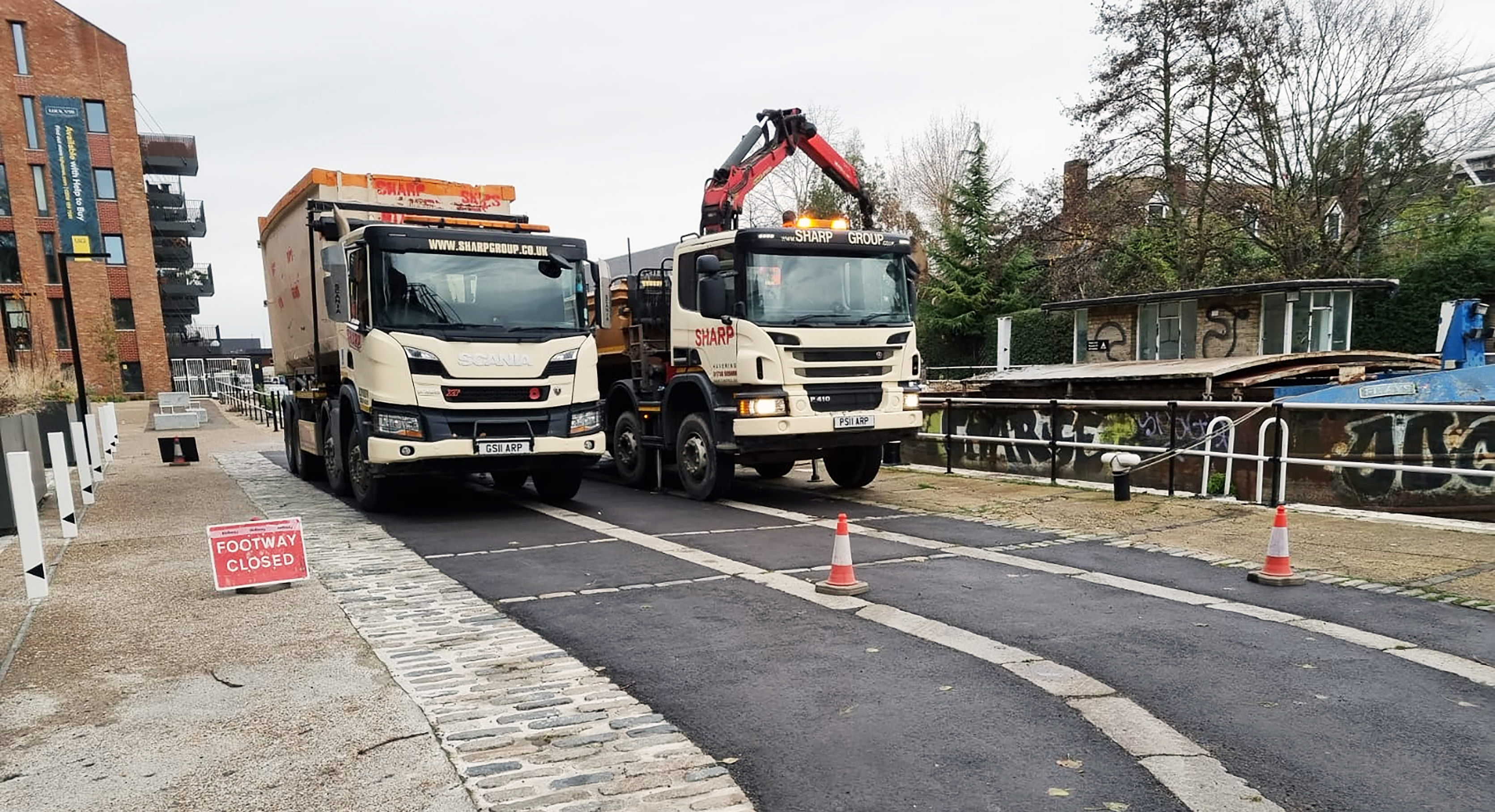Back to Listing
The Environmental Impact Of Fly Tipping And It's Consequences

Fly-tipping, the illegal disposal of waste in non-authorised areas, poses a serious threat to the environment. It creates unsightly scenes across both urban and rural landscapes but its consequences extend far beyond visual pollution. When waste is improperly discarded, it risks contaminating soil and waterways, posing hazards to wildlife and even potentially impacting human health. The environment suffers as natural habitats are destroyed, water quality is diminished, and vital ecosystems are disrupted.
The impacts of fly-tipping extend into the economic sphere as well. Local authorities in England spend millions addressing the problem, with funds that could be allocated to other community services being used to clean illegally dumped waste. The presence of waste can also affect property values and the viability of local businesses by decreasing an area's appeal and perceived safety, making it less attractive to visitors and investors alike.
While efforts to combat fly-tipping are significant, including stringent fines and enforcement measures, the issue remains persistent. The environmental impacts of fly-tipping, alongside the financial and social repercussions, underscore the importance of increasing public awareness and enhancing waste management strategies to protect natural and urban environments for future generations.
Defining Fly-Tipping
Fly-tipping, the illegal dumping of waste, poses a serious threat to the environment and incurs hefty costs for cleanup and enforcement.
Legal Framework
Under the Environmental Protection Act 1990, fly-tipping is a criminal offence in the UK. This legislation defines illegal waste disposal without a permit or in an unauthorised area. Offenders are subject to fines and may also face legal action if the disposed materials, such as asbestos, are hazardous.
Types of Waste Involved
The types of waste involved in fly-tipping vary and can include domestic rubbish, large household items like fridges or mattresses, and construction debris. Notably, hazardous materials like asbestos necessitate specialised disposal and heighten the environmental risks associated with fly-tipping. The improper handling of such substances can lead to severe long-term ecological damage and public health concerns.
Scope and Scale of the Issue
Fly-tipping is a significant environmental concern in England, with a pronounced presence in both rural and urban locales. It not only degrades the environment but also incurs substantial financial burdens.
Prevalence in England
In England, the issue of fly-tipping is indeed significant. Local Authorities in England addressed 1.13 million fly-tipping incidents in the 2020/21 year, marking a 16% increase from the previous year. The National Centre for Social Research pinpoints a vast array of factors contributing to this persisting problem despite considerable efforts to combat it.
Impact on Urban and Rural Areas
The impact of fly-tipping is pervasive in both urban areas and rural areas, affecting them in different ways. Urban regions deal with the blight of waste on streets and in public spaces, whereas rural regions suffer from the spoilage of natural landscapes. Moreover, the illegal dumping of waste imposes additional and often strenuous tasks on local councils, which must allocate scarce resources for clearance and enforcement actions. The presence of waste can be more than just an eyesore; it carries implications for wildlife, ecosystems, and even human health.
By addressing the scope and scale of fly-tipping, it becomes evident that this illicit activity is more than just a nuisance; it has considerable ramifications for the beauty and well-being of England's diverse environments.
Environmental Implications
Fly tipping, or the illegal disposal of waste in undesignated areas, poses significant environmental ramifications. The act not only tarnishes landscapes but also threatens ecosystems through direct and indirect pathways.
Effects on Wildlife
Fly-tipped waste can severely disrupt local wildlife. Discarded items, especially plastics and other non-biodegradable materials, often become inadvertent traps for small animals and birds, causing entanglement or ingestion. Moreover, piled waste can also block migration paths or alter the habitats, leading to distressing effects on the natural movement and lifecycle of wildlife. According to a report, waste materials dumped in rivers adversely affect the diets of aquatic species and may introduce harmful substances that can be ingested by fish, birds, and other riverine life forms.
Pollution and Biodiversity
Fly tipping contributes significantly to pollution, as waste materials can leach toxins into the soil and waterways, negatively impacting plant life and biodiversity. Pesticides, heavy metals, and other hazardous substances found in fly-tipped rubbish can poison the ground and surface waters, posing a threat to a variety of organisms and possibly leading to a decline in local biodiversity. Areas with high levels of fly tipping can resemble landfills, causing not only an eyesore but also a hotspot for contamination and long-term degradation of ecosystems. The introduction of foreign materials and chemicals into natural environments disrupts the balance of ecosystems and potentially leads to a loss in species diversity and abundance.
Economic Consequences
Each year, fly-tipping imposes significant economic burdens, mirroring its environmental impact. Two main areas – local councils and private individuals – bear the brunt of the financial repercussions.
Financial Burden on Local Councils
Local authorities in England are tasked with the clearance and management of fly-tipping. National Centre for Social Research reports describe the financial strain on councils, with costs exceeding £392 million in the 2018/19 period. Handling over a million incidents annually demonstrates not only a substantial expense for cleanup operations but also highlights resource allocation away from other vital services.
Cost to Taxpayers and Landowners
The National Centre for Social Research also pointed out the direct costs that fall upon taxpayers and landowners. Taxpayers fund the local councils and thus indirectly pay for the management of fly-tipping. Landowners, on the other hand, bear the immediate cost of clearing illegally dumped waste on their property, a scenario that can be financially draining, particularly when dealing with hazardous materials requiring special disposal methods.
Health and Safety Concerns
Fly-tipping, the illegal disposal of waste, chiefly household rubbish, poses substantial health and safety concerns. It affects both public health and the sanctity of public land along with private property. The subsequent subsections detail the hazards to public health and the risks to land stemming from this negligent act.
Hazards to Public Health
Fly-tipping can directly imperil public health by creating breeding grounds for vermin and insects that can transmit diseases. Piles of discarded waste can contain hazardous materials, like asbestos or chemicals, which, if not managed correctly, pose severe health risks to anyone in proximity. Notably, in heavily populated areas, such indiscriminate dumping can lead to direct contact with toxic substances for both people and animals, potentially leading to acute health issues.
Risks to Public Land and Private Property
The dumping of waste on public lands defaces natural landscapes, parks and urban environments, significantly diminishing the quality and safety of communal spaces. Household waste that includes bulky items like mattresses or sofas can not only be unsightly but also dangerous, resulting in physical hazards and increased fire risks. Onto private land, fly-tipping can carry legal implications for landowners who might face costly clean-up responsibilities and potential penalties. The illegal disposal on agricultural grounds, for example, can contaminate soil and water sources, leading to long-term detrimental effects on ecosystems and potentially impacting food safety.
Legal and Enforcement Challenges
Tackling fly-tipping requires robust legal frameworks and effective enforcement strategies. Local authorities and the Environment Agency face a complex battle in prosecuting offenders and implementing deterrents against this environmental crime.
Prosecution and Penalties
Prosecuting fly-tipping offences often hinges on the ability to gather sufficient evidence to identify and charge perpetrators. Penalties for fly-tipping can be severe, with offenders facing substantial fines and, in serious cases, imprisonment. The courts can issue unlimited fines and sentences of up to five years for illegal disposal of waste. Moreover, individuals may receive Fixed Penalty Notices (FPNs) from councils as an immediate punishment that serves as a deterrent without going through the courts.
Enforcement Actions and Strategies
Local authorities are at the forefront of enforcement actions against fly-tipping, utilising surveillance and waste carrier checks to intercept illegal activities. Councils have the power to seize vehicles involved in fly-tipping and can collaborate with the Environment Agency to tackle larger-scale waste crimes. Strategies include public education campaigns, installing CCTV at fly-tipping hotspots, and promoting legal waste disposal methods. Despite these efforts, the resources required for enforcement are considerable, resulting in a challenging balance between detection, action, and effective use of limited council budgets.
Government and Organisational Response
Government bodies and organisations have developed structured responses to tackle fly-tipping, focusing on stringent policies and regulations, as well as national and local initiatives aimed at improving the environment and public health.
Policies and Regulations
The UK Government, through the Department for Environment, Food & Rural Affairs (DEFRA), has implemented a series of regulations to control fly-tipping. It's a criminal offence, punishable by fines or even imprisonment. Local authorities have the power to issue fixed penalty notices for small-scale fly-tipping, while serious offences are subject to unlimited fines and can lead to a 5-year prison sentence.
DEFRA also works alongside organisations such as the Local Government Association to craft policies that aim to dissuade and penalise illegal waste dumping.
The Environment Agency enforces waste legislation at a national level, ensuring compliance and pursuing offenders.
National and Local Initiatives
A range of national and local initiatives have been launched to reduce fly-tipping incidents.
The UK Government has announced crackdowns, such as the one detailed here, which involve measures like increasing surveillance and enhancing the legal powers of local councils.
Local councils are responsible for removing fly-tipped waste on public land and investigating smaller-scale incidents. For more complex cases involving organised crime, the Environment Agency or National Resources Body takes the lead.
Through collaboration with rural associations like the Country Land and Business Association, local governments are working to educate landowners and the public, heightening awareness and incentives to report incidents, thus creating a multifaceted approach to fly-tipping eradication.
Community and Business Role
The role of businesses and the community is crucial in addressing the environmental issues associated with fly-tipping. By understanding their responsibilities and engaging in proactive involvement, they can significantly reduce the incidences of illegal waste dumping.
Corporate Responsibilities
Companies have a legal and moral duty to manage their waste in an environmentally-responsible manner. Businesses should ensure they are partnered with registered waste carriers and have an audit trail for their waste disposal. They must not only abide by the law but also adopt best practices in waste management, which includes educating their employees about the impacts of fly-tipping and the importance of proper waste disposal.
Public Engagement and Community Involvement
There is a strong need for community involvement to tackle the challenge of fly-tipping. Public education campaigns can raise awareness about the dangers and costs associated with the illegal disposal of waste. Communities can also participate in local clean-up initiatives and report incidents to their local authorities. This sense of community responsibility helps to deter the act of fly-tipping and encourages a culture of respect for the environment.
Solutions and Preventative Measures
Fly-tipping, the illegal deposit of waste on land that is not licensed to receive it, is a critical environmental issue that requires robust solutions and preventive strategies. The following sections detail the legislative framework and educational initiatives aimed at tackling this challenge.
Legislation and Sentencing Guidelines
Under UK law, fly-tipping is a criminal offence punished by fines or imprisonment. The Environmental Protection Act 1990 provides a legal foundation for combatting waste crimes, with enhancements to sentencing reflecting the gravity of offences. Strengthened sentencing guidelines ensure that offenders face penalties that mirror the environmental damage caused. For instance, the National Farmers Union (NFU) actively campaigns for stricter enforcement, advocating for a legal system that deters potential violators through significant fines and the possibility of prison sentences.
Education, Awareness, and Public Campaigns
An informed public plays a crucial role in preventing fly-tipping. Education and awareness campaigns, often driven by local authorities and environmental organisations, are vital in highlighting the consequences of illegal waste disposal. Public campaigns encourage the responsible management of waste and report incidents. They also inform the public about legal waste disposal options, thus preventing potential incidents of fly-tipping. Regular community clean-up events and educational programmes can further bolster the prevention of this issue by fostering a sense of collective responsibility towards the environment.
Technological Advancements in Detection and Deterrence
Advancements in technology have significantly bolstered efforts to detect and deter fly-tipping, a critical step towards more effective waste management and environmental protection. The incorporation of sophisticated monitoring systems and the innovation within waste management processes are at the forefront of these initiatives.
Monitoring and Reporting Systems
Detection of fly-tipping incidents has been revolutionised by high-tech monitoring and reporting systems. These systems typically involve the deployment of motion-sensing cameras and GPS technology to identify illegal dumping hotspots. Research shows that the data collected from these devices can be crucial in understanding patterns of fly-tipping and aiding enforcement actions.
For instance, authorities may use real-time surveillance to alert them when waste is being disposed of improperly. Camera footage serves as evidence that can lead to the prosecution of offenders. Additionally, mobile applications facilitate easy reporting of fly-tipping by the public, streamlining the process for both witnesses and waste management agencies.
Innovations in Waste Management
Innovations in waste management have introduced new ways to both deter waste crime and improve the efficiency of waste handling processes. One such innovation is the advent of 'smart' skips, which are equipped with sensors to detect when a skip is full or if unauthorised use occurs. These are particularly beneficial for skip hire companies looking to manage their waste resources more effectively.
Research into new waste processing methods has led to systems that are not only better for the environment but also less appealing targets for illegal dumping due to increased security and better tracking of waste. Innovative approaches, such as the use of blockchain for tracking waste or the application of intelligent software systems to predict where fly-tipping might occur next, contribute significantly towards deterrence.
Looking Ahead
As nations grapple with the environmental repercussions of fly-tipping, the upcoming years are pivotal for the implementation of more robust policies and a fundamental shift in public attitudes.
Future Projections
The incidence of fly-tipping on national highways and rural lands is projected to persist, potentially escalating in scale. Future research is essential to comprehend the full extent and impact, directing efforts where they are most needed. Efforts to engage focus groups may foster deeper understanding and identify novel solutions to mitigate this challenge.
Policy Changes and Evolving Attitudes
Policy change is anticipated to play a critical role in combatting fly-tipping. Prosecutions are likely to become more stringent, providing a greater deterrent. Additionally, evolving attitudes towards environmental stewardship could lead to increased public support for these measures. The development and adaptation of policies will likely be informed by consultations with experts and community feedback, ensuring they are both effective and reflective of societal values.
Frequently Asked Questions
This section addresses common inquiries regarding the environmental repercussions of fly-tipping.
What are the negative consequences of fly-tipping on local ecosystems?
Fly-tipping can disastrously affect local ecosystems, often resulting in harm to wildlife and degradation of natural habitats. Discarded waste can introduce toxic substances, leading to a decline in biodiversity.
How does fly-tipping affect soil and water quality?
Soil and water contamination is a significant issue arising from fly-tipping. Harmful chemicals from waste can leech into the ground and waterways, disrupting aquatic life and soil microorganisms crucial for ecosystem health.
What legislative measures are in place in the UK to combat fly-tipping?
The UK government has set legislative measures to tackle fly-tipping, including the Environmental Protection Act 1990, which empowers local authorities to investigate and penalise illegal waste dumping.
How does fly-tipping contribute to environmental pollution?
Fly-tipping introduces a variety of pollutants into the environment, from non-biodegradable plastics to hazardous chemicals, contributing significantly to land, air, and water pollution.
What penalties are imposed for fly-tipping offences under the Environmental Protection Act 1990?
Under the Environmental Protection Act 1990, perpetrators of fly-tipping can face hefty fines and even imprisonment, depending on the severity of the offence.
What strategies can be implemented to prevent incidents of fly-tipping?
Preventative strategies include increasing surveillance of hotspots, improving waste management services, and raising public awareness about the consequences of fly-tipping and legal disposal methods.
Need efficient skip hire? Contact Sharp Skips for fast delivery and affordable rates on skip hire, roll on off hire, and grab loader hire today!









